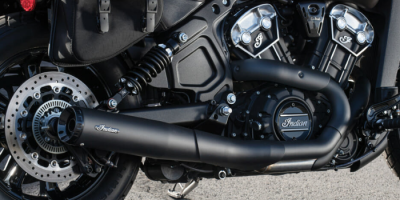Power steering fluid and transmission fluid are two different fluids that are used in automobiles, but they have different purposes. Power steering fluid is used to lubricate the power steering system, while transmission fluid is used to lubricate the transmission. Power steering fluid is typically thinner and lighter than transmission fluid, and is designed to stay in the power steering system and not leak or mix with the transmission fluid.
What is Power Steering Fluid?
Power Steering Fluid is a special type of lubricant designed specifically for use in power steering systems. It is a hydraulic fluid, meaning it is designed to provide hydraulic pressure to the power steering system and keep it running smoothly. The fluid is usually made up of a blend of mineral and synthetic oils, as well as additives designed to resist corrosion and reduce foaming. As the power steering system works, the fluid helps keep the steering wheel turning smoothly and helps to dampen any jerky movements from the steering system. It also helps to keep the system free from dirt and other contaminants. Power steering fluid needs to be checked regularly and replaced as necessary to ensure that the system continues to function properly.
Transmission fluid, on the other hand, is a lubricant specifically designed for use in automatic transmissions. It is usually made of a blend of base oils and additives that help to reduce wear and improve shifting performance. Transmission fluid helps to lubricate the moving parts inside the transmission and helps to keep them cool. It also helps to keep the transmission clean, and helps to prevent buildup of dirt and other contaminants. Transmission fluid should be checked regularly and replaced as necessary to keep the transmission running smoothly.
What is Transmission Fluid?
Transmission fluid is a lubricant used to keep the various components of an automobile’s transmission system in good working order. It helps to protect the gears, bearings, and other components of the transmission from wear and tear. It also helps to dissipate heat and keep the transmission cooler. Transmission fluid is designed to flow easily and evenly through the transmission system. It can be a mineral oil, synthetic oil, or a combination of both.
The type of fluid used depends on the specific make and model of the vehicle. Transmission fluid should be checked regularly and replaced when needed. It is important to use the correct type of fluid for the vehicle, as using the wrong type can cause severe problems with the transmission.
Power steering fluid is a hydraulic fluid used in the power steering system of a vehicle. Its purpose is to provide hydraulic pressure to the system, allowing for the easier turning of the vehicle’s steering wheel.
This fluid is contained within a sealed system, and should only be checked and changed when needed. Power steering fluid is typically a mineral oil, although some newer vehicles may use synthetic oil. It is important to use the correct type of fluid for the vehicle, as using the wrong type can cause severe damage to the power steering system.
Difference Between Power Steering Fluid and Transmission Fluid
Power steering fluid and transmission fluid are two different types of automotive fluids used in vehicles to maintain the lubrication and movement of the engine components. While the two fluids are both essential for a vehicle to operate properly, they are distinct from each other in that they serve different functions. Power steering fluid is used to lubricate the power steering system, which is responsible for the steering wheel’s ability to turn with ease.
On the other hand, transmission fluid is used to lubricate the transmission, which is responsible for transferring power from the engine to the wheels. Though both fluids are similar in composition, they are not interchangeable and should not be used interchangeably.
Power steering fluid is usually composed of a mix of mineral oil, while transmission fluid is usually composed of synthetic oil. As a result, power steering fluid is more likely to break down and wear out quicker than transmission fluid. Additionally, power steering fluid is typically thicker than transmission fluid, making it more durable in extreme temperatures.
Functions of Power Steering Fluid
Power steering fluid is an essential component of a vehicle’s power steering system. It serves the purpose of lubricating the entire power steering system, which consists of a pump, hoses, valves, and steering rack. Its main function is to reduce the friction between the moving parts of the system and to protect them from corrosion.
Power steering fluid also helps to keep the system cool by dissipating heat generated by the power steering system. Additionally, it helps to improve the steering response of the vehicle by providing a better flow of fluid from the pump to the steering rack. It also helps to ensure that the power steering system functions properly at all times. Ultimately, power steering fluid helps to make driving more comfortable and easier to control.
Functions of Transmission Fluid
Transmission fluid is a critical component of any vehicle. It is responsible for lubricating, cooling, and cleaning the internal parts of the transmission. It also helps to provide hydraulic power to the drivetrain, which is an integral part of the powertrain system.
Transmission fluid is typically made of a combination of synthetic and mineral-based oils and is designed to resist breakdown under extreme heat. It is important to check and change the transmission fluid regularly to ensure that the transmission is functioning correctly. The transmission fluid also helps to protect the transmission from wear and tear, and helps to extend its life.
Similarities Between Power Steering Fluid and Transmission Fluid
Power steering and transmission fluids are both important components of any vehicle, as they are responsible for lubricating and cooling the components of these systems. Though they serve different purposes, they have a few similarities. Both power steering and transmission fluids are typically composed of base oils and additives, and both perform the same basic functions of lubrication and cooling.
The main difference between the two is that power steering fluid is designed to be more slippery than transmission fluid, allowing it to provide greater lubrication and efficiency when transferring power from the steering wheel to the wheels of the car. Both fluids must be regularly checked and replaced as necessary in order to keep the respective systems of the car running smoothly.
Conclusion
It is important to know the differences between power steering fluid and transmission fluid. Power steering fluid is used to maintain the pressure in the power steering system, while transmission fluid is used to lubricate and cool the transmission components. Both fluids are essential to the proper functioning of the vehicle, and they should be checked regularly to ensure that they are not low or dirty. If either fluid is found to be low or dirty, it should be replaced immediately.




















Comments